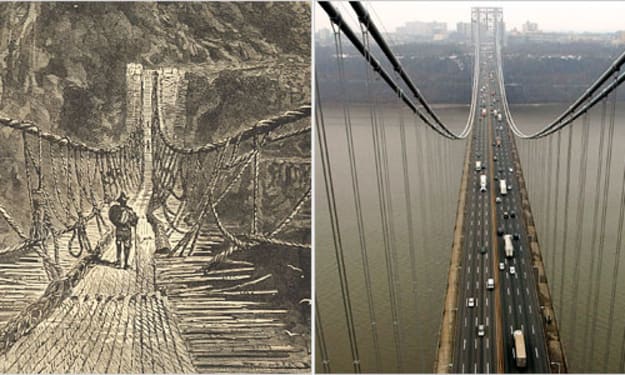The Infamous Iceberg that Sank the Titanic
Unraveling the Mystery

At the beginning of 1912, a momentous event took place in the frigid waters of Southwest Greenland. A colossal chunk of ice broke off a glacier, composed of snow that had fallen approximately 100,000 years before, during the time of roaming mammoths. This iceberg, aptly named "The Traveler," embarked on a remarkable journey that would ultimately lead to one of the most infamous maritime disasters in history - the sinking of the Titanic.
The Iceberg's Remarkable Journey:
The Iceberg was an immense entity, measuring over 1,700 feet in length and weighing a staggering 75 million tons. Surprisingly peaceful, it steered clear of ships and busy transport routes, making its way further south than most icebergs. Out of the thousands that drift away from Greenland's glaciers, only one percent ever makes it all the way to the Atlantic Ocean. Yet, in April, The Traveler was already over 5,000 miles away from the Arctic Circle. Even after months of melting, it still weighed an impressive 1.5 million tons, nearly twice the weight of the Golden Gate Bridge.
Beneath the surface of the ocean, only a fraction of an iceberg is visible, typically around one-tenth of its total mass. This hidden mass is what makes icebergs particularly treacherous to ships, as collisions can occur without warning.
The Titanic's Ill-fated Encounter:
Several days before The Traveler reached the Atlantic Ocean, the Titanic, a luxurious steamship, set sail on its maiden voyage. The largest ship of its time, the Titanic carried more than 3,000 passengers and crew. It was believed to be unsinkable, a claim that would prove tragically false.
On the night of April 14, 1912, the Titanic was in the North Atlantic Ocean, approximately 370 miles away from Newfoundland. At about 11:40 PM, the ship struck The Traveler, causing fatal damage to its hull. Despite the crew's efforts to reverse course and close watertight compartments, the Titanic was doomed. In just a few hours, the ship broke in half and sank beneath the waves, taking more than 1,500 lives with it.
The Enigmatic Iceberg:
While the Titanic has been extensively studied and documented, very little is known about the iceberg that sealed its fate. Experts have attempted to piece together its origin and journey. Computer modeling and data from 1912 suggest that The Traveler likely originated from a cluster of glaciers in Southwest Greenland, traveling southward through various currents before reaching the Atlantic.
The Titanic's encounter with the iceberg raises questions about why it was not spotted in time to avoid the collision. The ship had received iceberg warnings, and the crew was aware of the potential danger. However, several factors, including atmospheric conditions, lack of binoculars in the crow's nest, and potential optical illusions, contributed to the crew's inability to detect the iceberg until it was too late.
Clues from Photographs and Witness Accounts:
After the Titanic disaster, photographs of the iceberg believed to be responsible for the collision were taken by the SS Prince Adalbert and the Minia. These images showed a streak of red paint along the iceberg's base, indicating that it had likely collided with a ship within the previous 12 hours. Newspaper reports estimated the iceberg's height to be between 50 to 100 feet and its length to be 200 to 400 feet.
The Titanic's iceberg probably began its journey from Greenland, making its way through various waterways before reaching the Atlantic. The iceberg's size and the damage it caused to the ship suggest that it was significantly larger than smaller icebergs such as growlers or bergy bits.
Conclusion:
The iceberg that sank the Titanic remains an enigmatic piece of history. While we can only speculate about its exact size and path, one thing is certain - it was a massive force of nature that led to one of the most tragic maritime disasters in history. The Titanic's story serves as a stark reminder of the dangers posed by icebergs, prompting modern measures to track and prevent potential collisions in the future.
About the Creator
Enjoyed the story? Support the Creator.
Subscribe for free to receive all their stories in your feed. You could also pledge your support or give them a one-off tip, letting them know you appreciate their work.





Comments (1)
Great story! Enjoyed the history!